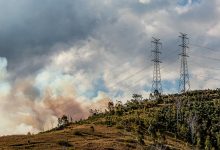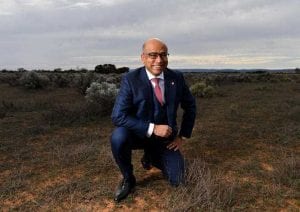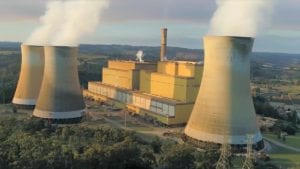The failure of many rooftop solar systems to respond correctly when massive bush-fires caused the separation of the NSW and Victoria grids in early January has been blamed on the installation of rooftop solar systems and their inverters, rather than the equipment itself.
The poor response of the rooftop solar systems was one of the major issues identified in a review of the January 4 incident by the Australian Energy Market Operator. But it wasn’t the only one: Several big coal generators also failed to respond as required, and some coal generators did the opposite of what was expected, while even the Hornsdale big battery in South Australia failed to hit its target in response to frequency variations.
The issue with rooftop solar, however, is illustrative because it is one of the chief areas of concern for AEMO, particularly as the uptake of rooftop solar grows at rates beyond most predictions, heralding a fundamental and eagerly anticipated shift from a centralised to a decentralised grid.
AEMO now sees it as crucial to have both visibility and “control” over rooftop solar PV as the technology accounts for an ever increasing share of demand, particularly in states such as South Australia and W.A., but also elsewhere. Tough new standards have been introduced for new rooftop solar systems in South Australia, including the ability to disconnect when required to maintain grid security.
The January 4 incident highlights some of AEMO’s concerns, particularly when up to half of rooftop solar systems fail to respond as expected. “Distributed PV generation is now a significant component of the power system, and as such its aggregated behaviour can affect outcomes during system incidents,” it says.
On January 4, bushfires in the Snowy Mountains caused outages on several major transmission lines just before noon, but the situation worsened when two other lines tripped, leading to a “separation” of the main grid into two, leaving Queensland and NSW acting as one island, and Victoria and South Australia, with a little bit of south west NSW, operating as another island.
The separation of the grids caused an “over frequency” event in Victoria and South Australia, and the expected response from the inverters was to dial down their output slightly.
But AEMO’s study, using data from Solar Analytics, shows that 35% of distributed PV systems in South Australia and 46% of distributed PV systems in Victoria installed under the 2015 standard did not respond as specified. But it believes it wasn’t so much the equipment that failed, as the poor installation.
“Bench testing of 16 inverters sold in the NEM as compliant with the 2015 standard showed that most demonstrated the specified over-frequency droop response under laboratory conditions,” AEMO says.
“This suggests that the cause of the inverters observed to not demonstrate this behaviour in the field is more likely related to installer processes, rather than manufacturer settings and design. AEMO is investigating this further with stakeholders and establishing a program of work to improve compliance.”
As for the other issues, AEMO says the failure of Hornsdale to deliver at its full rating of lower contingency FCAS was the result of an error in its settings, which has now been corrected.
But while that seemed easily fixed, the problems at the big coal generators are harder to resolve, simply because the equipment is ageing and solutions are more complicated. Two units at Loy Yang A failed to meet their “fast lower” and “delayed lower” FCAS requirements, and both units initially ramped up rather than ramping down while the frequency was over 50.15 Hz.
The more modern Loy Yang B only delivered between 78%-88% of its delayed lower service, and AEMO is working with owner Alinta Energy to better understand the performance of the generating units to ensure compliance.
Other coal units sent to the naughty corner included Eraring in NSW – which was enabled for 15MW of the fast raise service but did not respond to the low frequency event – and Tarong, the ageing generator in Queensland which was unable to maintain its frequency control for more than a few seconds, as a result of unexpected response from the governor control.
If all this sounds painfully familiar to “engineers in brown cardigans”, as ESB boss Kerry Schott delightfully described them earlier this week, it is because the equipment is also getting old, and the ageing coal and gas generators can’t perform as they once did in their prime.
The thermal generators have been the traditional suppliers of important services such as frequency control, but the problem is now that they are no longer very good at it. They are slower than batteries, and like many ageing things, sometimes forget what they are supposed to do.
Some of the “governor controls” have been relaxed, meaning they are even slower to respond, or don’t respond at all. This situation has been at least partly blamed on the perverse result of market rules. And it appears there is no quick fix.
Which is one reason why AEMO and other energy bodies are keen to act.
Firstly, to ensure that the rooftop solar and inverters are properly installed and can do what they are supposed to do, and to design new markets that means other technologies such as batteries and demand response have the incentives to provide critical grid services such as inertia and frequency control and relieve the burden of a tired fossil fuel fleet.










